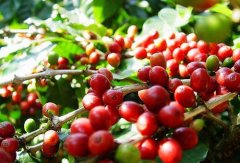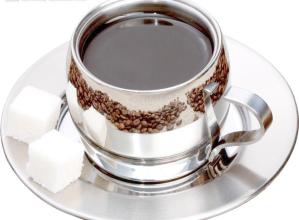Nekisse Red N2 Ethiopian Native Species Fine Coffee Black Coffee
The second wave of coffee people are used to using subjective rules of thumb to describe the extraction, roasting, cultivation and processing of coffee, but the third wave is supplemented by more accurate scientific research data to explain the coffee industry. the contents of sucrose, organic acids and aromatic components of all coffee varieties are compared with scientific data. The chemical changes in roasting and extraction are also explained by scientific theory, and even the abstract coffee concentration is presented as a specific numerical value. It is the third wave and the sixth evolution to study the upstream, middle and lower reaches of coffee as an aesthetics, and pay attention to the scientific research of seed selection, cultivation, treatment, cup measurement, roasting, extraction, concentration and extraction rate.
Honey Kiss (Nekisse N2):
[Origin]: 90 + Ethiopia Wellega (Waliga) and Sidama (Hidamo) producing areas
[production season]: 2013-2014
[variety]: Ethiopian native species
[Level]: 12
[altitude]: 17502,000m
[treatment]: insolation
[flavor]: the taste is clean and layered. Peach, berry, passion fruit and cream, milk chocolate flavor balance, is a classic good coffee. From hot to cold, it continues to bring faint aromas of flowers, blueberries, fragrant wood and cocoa.
Red Honeykiss (Nekisse Red N2):
[Origin]: 90 + Ethiopia Wellega (Waliga) and Sidama (Hidamo) producing areas
[production season]: 2013-2014
[variety]: Ethiopian native species
[Level]: 39
[altitude]: 17502,000m
[treatment]: insolation
[flavor]: red treatment enhances the flavours of blueberries, cherries, brandy and dark chocolate. At the same time, it maintains the balance of fruit and chocolate and its multi-layered taste. It's very subtle and measured. It's a rare good coffee.
Important Notice :
前街咖啡 FrontStreet Coffee has moved to new addredd:
FrontStreet Coffee Address: 315,Donghua East Road,GuangZhou
Tel:020 38364473
- Prev

Clinique Rose Summer Coffee Bean 90 + Ethiopia Yirgacheffe (Yega Snow) producing area
The second wave of coffee people are used to describing the essence of coffee with subjective rules of thumb.
- Next

Introduction of Aldumara Coffee beans, the Top Coffee beans in Mexico
During the harvest, farmers harvest fresh red fruit every day, and every two days the coffee fruit is sent as a unit or sold to a washing plant for treatment. coffee fruit that has not gone through a water treatment plant is usually naturally fermented for about 12 hours, and then passed through the sun for drying and shelling. in any case, farmers always try their best to send them to the water treatment plant for treatment so that they can be washed.
Related
- Does Rose Summer choose Blue, Green or Red? Detailed explanation of Rose Summer Coffee plots and Classification in Panamanian Jade Manor
- What is the difference between the origin, producing area, processing plant, cooperative and manor of coffee beans?
- How fine does the espresso powder fit? how to grind the espresso?
- Sca coffee roasting degree color card coffee roasting degree 8 roasting color values what do you mean?
- The practice of lattes: how to make lattes at home
- Introduction to Indonesian Fine Coffee beans-- Java Coffee producing area of Indonesian Arabica Coffee
- How much will the flavor of light and medium roasted rose summer be expressed? What baking level is rose summer suitable for?
- Introduction to the characteristics of washing, sun-drying or wet-planing coffee commonly used in Mantenin, Indonesia
- Price characteristics of Arabica Coffee Bean Starbucks introduction to Manning Coffee Bean Taste producing area Variety Manor
- What is the authentic Yega flavor? What are the flavor characteristics of the really excellent Yejasuffi coffee beans?

